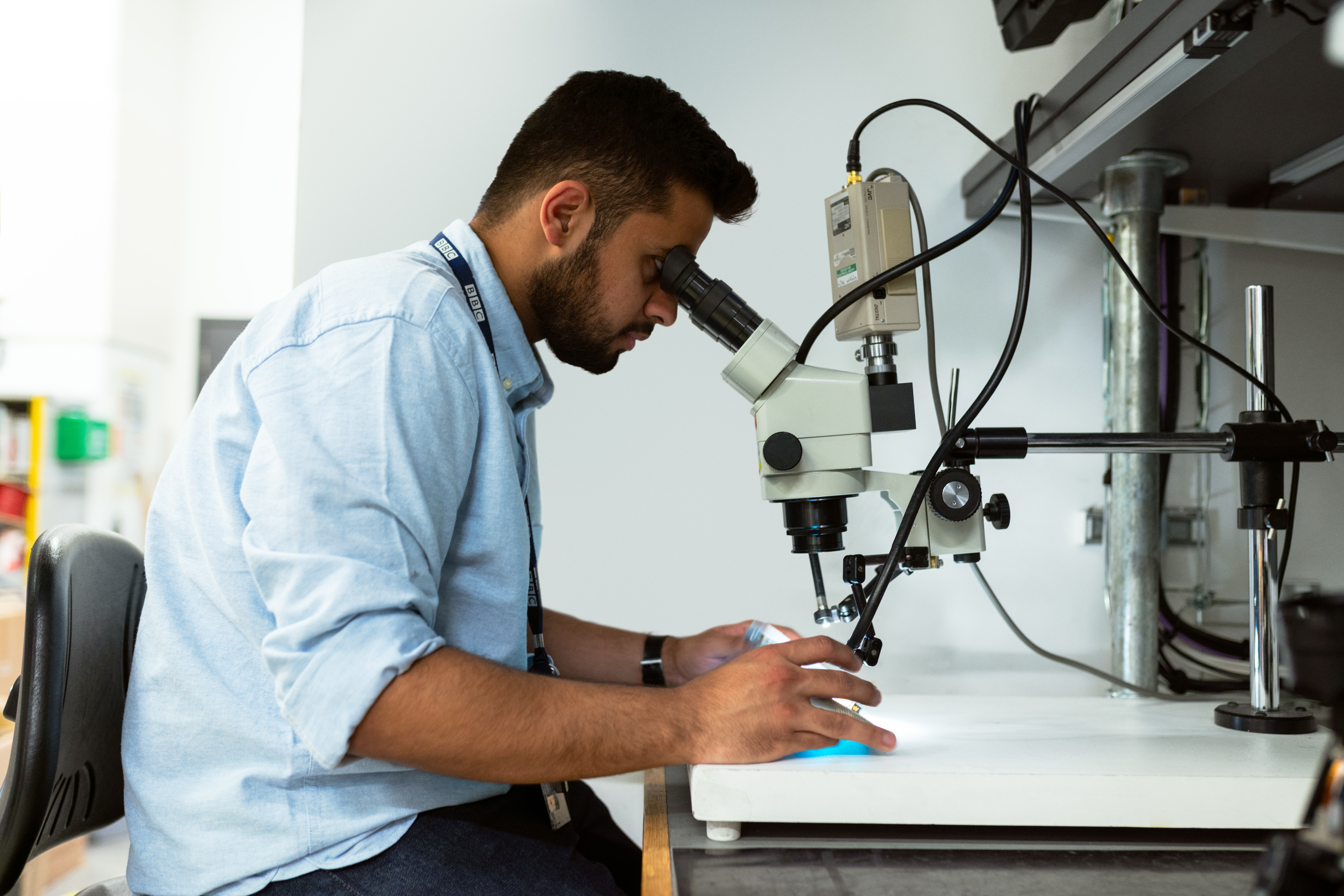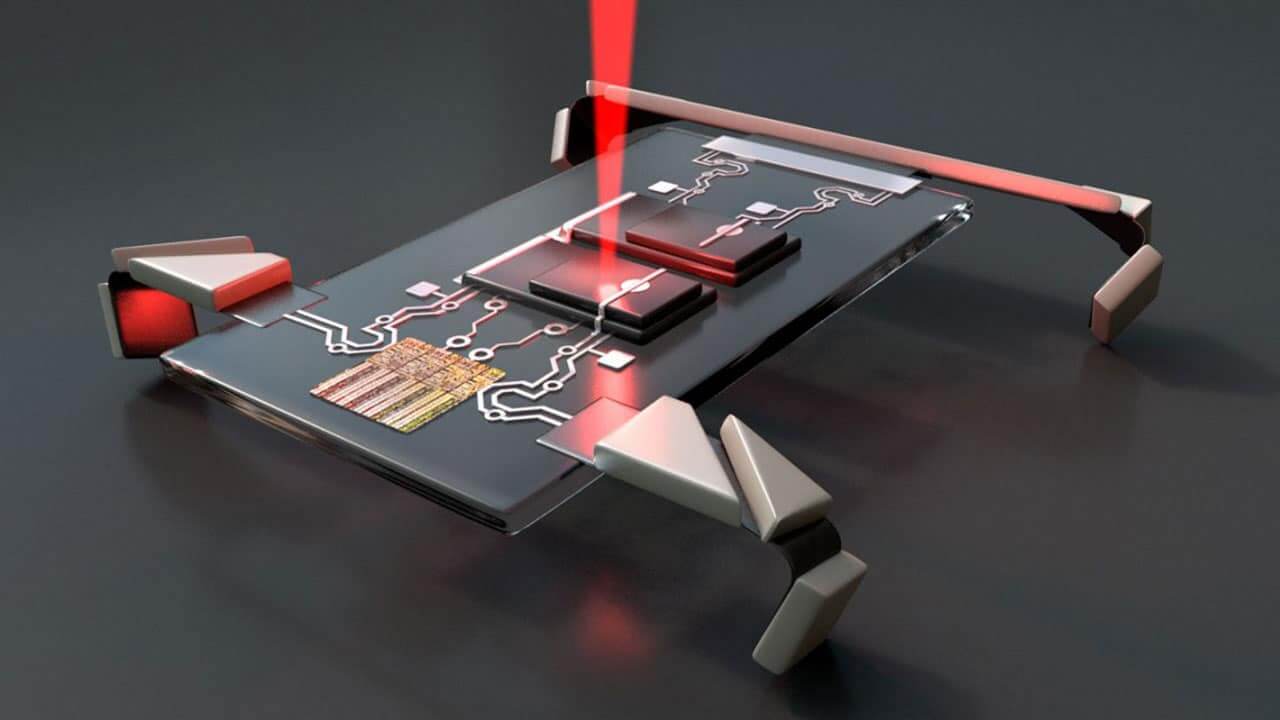 For decades, researchers have been working on nanotechnology medical applications that can be used in our bodies. Until now, the technology hasn’t really found its footing and excited the rest of the research and industry fields. But new microrobotics out of Cornell University are showing promising results with their little robotic feet and tiny size (smaller than the width of a human hair, in fact).
For decades, researchers have been working on nanotechnology medical applications that can be used in our bodies. Until now, the technology hasn’t really found its footing and excited the rest of the research and industry fields. But new microrobotics out of Cornell University are showing promising results with their little robotic feet and tiny size (smaller than the width of a human hair, in fact).
Researchers Marc Miskin, Itai Cohen, and Paul McEuen developed the new robotics with the goal of creating an electronic that can move in a controllable manner. Importantly, these microrobotics were not to use magnetism, which many past applications had used, to control the robot’s movement.
Controlling the Microrobots
Each microrobot has two pairs of platinum legs outfitted with actuators attached to a rectangular-shaped body that has solar cells on it. Each leg can be independently controlled to move using lasers. This might sound a little difficult to control, but the team has shown how quickly you can learn to control the microrobots: they made multiple robots march in a coordinated fashion.

Because these robots are made with silicon-based electronic components, they’re able to be mass-produced using nanofabrication technology, similar to the process of manufacturing computer chips. The robots also have “conventional brains” that are based on electronic circuits, which can be upgraded and updated in future iterations. Eventually, the robots could be configured to respond to more complex commands from researchers and medical providers.
Allan Brooks and Michael Strano, researchers at Boston-based MIT, say that the Cornell team has created a “fresh design concept” due to the actuators in the robots’ legs and the seamlessly-integrated sensors and logic components. According to the MIT researchers, 50 years’ worth of microelectronics research can now be incorporated into these microrobots.
The Obsession with Tiny Robots
Robots that are barely visible to the human eye have been the subject of much research and speculation over the past six decades. In the 1960s, Richard Feynman and Hollywood were enraptured with the thought of tiny “surgeons” that could be swallowed. Once in the body, these robots would perform surgeries on demand.
For the past six decades since then, researchers have been making large advancements in micro- and nano-fabrication techniques. It was with these constant updates that the concept of the Cornell microrobots came to fruition. Historically, it’s been extremely difficult to control the robot’s movements in the body. Moving reliably, in a predictable fashion, has been nearly impossible, to say the least.
Making Robots Move
In the past, researchers have designed microrobots that respond to magnetism, sound, light, temperature, or chemicals. For most researchers, electronically-controlled legs have been the biggest challenge. So that’s where the Cornell researchers decided to begin their development.
The legs they designed are made with a sheet of platinum that’s seven nanometers thick and use lithography, an industry-standard semiconductor chip printing technology. One side is coated with an inert material like titanium or graphene. The exposed side attracts particles in the body’s liquid environment when zapped with electricity.
The legs don’t have joints, but they do have origami-like knees that bend at the fold. This small feature allows the robots to “swim” through the body. On the robots’ body, there are solar panels that turn the laser energy into electricity that moves the robot’s legs. One solar cell controls the front legs, and another solar cell controls the front legs.
The Cornell robots are the smallest microrobots in existence with electronics embedded. They can survive in over a dozen orders of magnitude in acid pH and temperature changes up to 100°F. They can be removed from the body with a syringe without breaking, and they can even self-inject themselves into an amoeba.
Little Magic Robots
Suffice it to say, these microrobots are resilient and extremely useful. They’re easy to manufacture in large quantities, and best of all, they’re very affordable to manufacture: at $0.001 per robot, medical providers can’t pass up this deal. Although the robots can’t power themselves without requiring a recharge, the researchers aren’t worried about the negative consequences of this lack of feature, saying it’s perfect for treating or diagnosing surface tissue, like the eye or nose.

And some may think the robots’ lack of connectivity to the Internet could be another major issue, but for now, that just means some built-in cybersecurity. Because the robots’ brains can be easily upgraded, there is far more potential in what the robots can do than what they can’t do.
Opening up New Worlds
Miskin, one of the authors of the study, says that he thinks these robots are going to open up “all kinds of amazing worlds that are too small to see”. And we can’t wait to learn so many new things about our bodies and how they work. With all of these robotic features, we’d love to see how implementing the Internet of Things into these robots’ workflows would improve medical services, the patient experience, and medical research in the future.
Another cool application that the researchers may add is AI, especially one that’s been briefed on the patient’s history, diagnosis, and current status. One thing’s for sure: the future of medicine is a lot brighter thanks to these tiny, almost invisible, controllable microrobots.





